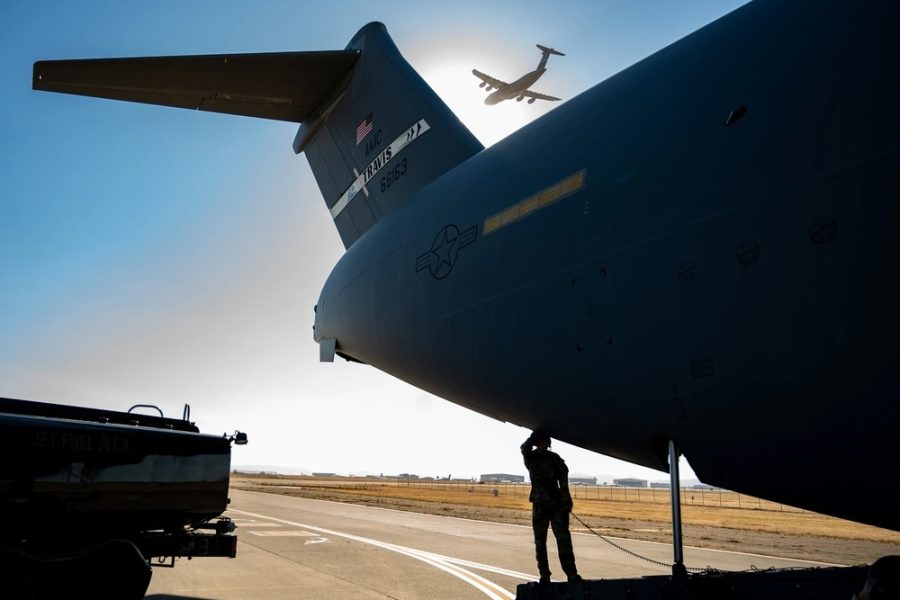NATIONAL HARBOR, Md.—The head of Air Mobility Command envisions just one type of aircraft will handle the Air Force’s strategic airlift needs when the venerable C-17 and C-5 transport jets are replaced, though the exact nature of that aircraft is yet to be determined.
“As far as what we want in the next platform: we want agility, we want speed, we want to be able to operate in a higher threat environment,” Gen. John Lamontagne told reporters at a Sept. 22 media roundtable at AFA’s Air, Space & Cyber Conference.
“Those aren’t all things that mix really well, and so what you prioritize and what you cherish, will help define where we go,” he added.
The goal is to start the replacement process for the C-17 in particular around the 2040s, ideally before the airframe becomes difficult to keep flying amid the military’s nonstop worldwide demand for its strength and range.
“If we look at what happened with the [C-]141 after the Gulf War, it basically told us when it was done,” Lamontagne said. “We’d like to have a plan in place, so when the service life starts to erode on the C-17, whether it’s wings, engines, or more, we’ve got a competition already going.”
The Air Force has 222 C-17s about 22 years old on average, while its fleet of 52 C-5s is about 37 years old on average. For scale, the C-17 can carry a single Abrams tank, while the C-5 can carry two or a handful of helicopters.
Whatever takes the place of those aircraft, it will likely have to do more than just fly cargo and passengers. As Air Force officials eye increasingly sophisticated anti-aircraft threats from rivals such as China and Russia, one priority is for future airlift platforms to “make sense of the environment,” Lamontagne said, using both onboard sensors and secure, long-range communications so that air crews can plug into larger sensor networks.
“If you can’t make sense of the threat environment, you’ve got no chance,” he said.
The aircraft also needs defensive systems, particularly against longer-range weapons, so that airlift can “bring a lot more capability to the joint force in a much deeper threat environment,” Lamontagne said. And it needs to to spend as little time on the ground as possible while refueling, since on the ground is where aircraft are most vulnerable to enemy fire.
The general expects an analysis of alternatives for next-generation airlift sometime in the next few years. An analysis of alternatives is a comparison of products for military needs, with the goal of selecting the best option to guide the next step of the acquisition process.
When asked about recent discussions to restart the C-17 production line, Lamontagne said there are no current plans to do so.
“One step at a time,” he said. “Capabilities-based assessment, analysis of alternatives, competition.”
While the general envisions one airplane will replace the C-5 and C-17, there is more than one future airlift program in town. Others include small, autonomous planes that can ferry about 3,000 pounds over short distances, and an intra-theater platform that can land and take off from a damaged runway.
How NGAL would fit with those other capabilities is not yet clear. In the meantime, Air Mobility Command is also still developing options for a Next-Generation Air Refueling System, or NGAS, to replace the aging KC-135 tanker.
After AMC completed an analysis of alternatives for NGAS this spring, the command recently put out a request to industry to help the command get more refined estimates for how much it would cost to produce next-generation tankers capable of evading enemy sensors.
“Is it an F-35 level of exquisite stealth with a KC-135-sized platform, or something in between?” Lamontagne said. “This is really, at its simplest, an attempt to refine those costs … and figure out what’s in the realm of the possible at the right level of signature management, if we go down that route.”
The general said he expects Industry responses in the next few weeks. For now, “just about every option is on the table.”


